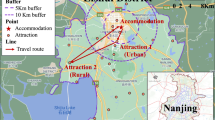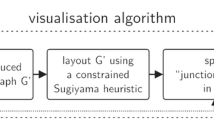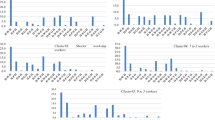Abstract
Trip chaining is a phenomenon that we know exists but rarely investigate. This could be attributed to either the difficulty in defining trip chains, extracting such information from travel diary surveys, the difficulty in analysing all the possible trip chain types, or all of the above. Household travel diary surveys provide a wealth of information on the travel patterns of individuals and households. Since such surveys collect all information related to travel undertaken, in theory it should be possible to extract trip-chaining characteristics of travel from them. Due to the difficulty in establishing and analysing all of the possible trip chain types, the majority of research on trip chaining has appeared to focus on work travel only. However, work related travel in many cities does not represent the majority of activities undertaken and, for some age groups, does not represent any travel at all. This paper begins by reviewing existing research in the field of trip chaining. In particular, investigations into the definitions of trip chaining, the defined typologies of trip chains and the research questions that have been addressed are explored. This review of previous research into trip chaining facilitates the following tasks: the identification of the most useful questions to be addressed by this research; defining trip chaining and associated typologies and defining data structures to extract trip chaining information from the household travel surveys conducted in metropolitan Adelaide, South Australia. The definition and typology developed in our research was then used to extract trip-chaining information from the household travel diary survey (MAHTS99) conducted in Adelaide in 1999. The extracted trip chaining information was then used to investigate trip-chaining behaviour by households. The paper reports the results of this analysis and concludes with a summary of the findings and recommendations for further investigations.
Similar content being viewed by others
References
Adams, P.C.: Application of a CAD-based accessibility model. In: Janelle, D.G., Hodge, D.C. (eds.) Information, Place, and Cyberspace: Issues in Accessibility, pp. 217–239. Berlin, Springer, Berlin (2000)
Bowman, J.L., Ben-Akiva, M.E.: Activity-based disaggregate travel demand model system with activity schedules. Transport. Res. A 35, 1–28 (2001)
Clarke, M.L.: Household activity-travel patterns study in Adelaide: Documentation of the PISA technique. Stage 2: Report 3. Transport Studies Unit, Oxford University, December (1987)
Davidson, D.: Impact of suburban employee trip chaining on transportation demand management. Transport. Res. Record 1321, 82–89 (1991)
D’Este, G.: A technique for incorporating the effect of changing patterns of travel behaviour into the traditional transport planning paradigm. J Eastern Asia Society Transport. Stud. 2, 1099–1111 (1997)
Forer, P., Huisman, O.: Space, time and sequencing: Substitution of the physical virtual interface. In: Janelle, D.G., Hodge, D.C. (eds.) Information, Place, and Cyberspace: Issues in Accessibility, pp. 73–90. Berlin, Springer (2000)
Golob, T.F.: A nonlinear canonical correlation analysis of weekly trip chaining behaviour. Transport. Res. A 24, 385–399 (1986)
Goulias, K.G., Kitamura, R.: Recursive model system for trip generation and trip chaining. Transport. Res. Record 1236, 59–66 (1989)
Hagerstrand, T.: What about people in regional science? Papers Regional Sci. Assoc. 14 (1970)
Hensher, D.A., Reyes, A.J.: Trip chaining as a barrier to the propensity to use public transport. Transportation 27, 341–361 (2000)
Holzapfel H.: Trip Relationships in Urban Areas. Aldershot, Gower (1986)
Jou, R.-C., Mahmassani, H.S.: Comparative analysis of day-to-day trip-chaining behavior of urban commuters in two cities. Transport. Res. Record 1607, 163–170 (1998)
Kondo, K., Kitamura, R.: Space-time constraints and the formation of trip chains. Regional Sci. Urban Econ. 17, 49–65 (1987)
Kwan, M.-P.: Gender, the home-work link, and space-time patterns of nonemployment activities. Econ. Geogr. 75(4), 370–394 (1999)
Kwan, M.-P.: Human extensibility and individual hybrid accessibility in space-time: a multi-scale representation using GIS. In: Janelle, D.G., Hodge, D.C. (eds.) Information, Place, and Cyberspace: Issues in Accessibility, pp. 241–256. Berlin, Springer (2000)
McGuckin, N., Murakami, E.: Examining trip-chaining behaviour: a comparison of travel by men and women, Federal Highway Administration. Washington, DC, FHWA (1995)
Nishii, K., Kondo, K., Kitamura, R.: Empirical analysis of trip chaining behavior. Transport. Res. Record. 1203, 48–59 (1988)
Primerano, F., Taylor, M.A.P.: An accessibility framework for evaluating transport policies. In: Levinson, D., Krizek, K.J. (eds.) Access to Destinations: Rethinking the Transportation Future. Elsevier, London (2005)
Srinivasan, S.: Linking land use, transportation and travel behaviour: understanding trip chaining in terms of land use and accessibility patterns. Cambridge, Department of Urban Studies and Planning, Massachusetts Institute of Technology (1998)
Stopher, P.R., Hartgen, D.T., Li, Y-J.: SMART: simulation model for activities, resources and travel. Transportation 23, 293–312 (1996)
Strathman, J.G., Dueker, K.J.: Understanding Trip Chaining. Special Reports on Trip and Vehicle Attributes, 1990 NPTS Report Series. Washington DC, US Department of Transportation (1995)
Strathman, J.G., Dueker, K.J., Davis, J.S.: Effects of household structure and selected travel characteristics on trip chaining. Transportation 21, 23–45 (1994)
Thill, J.-C., Thomas, I.: Towards conceptualising trip-chaining behaviour: a review. Geogr. Anal. 19, 1–17 (1987)
Acknowledgements
This project was a joint effort between the Transport Systems Centre (TSC) of the University of South Australia and the South Australian Department for Transport, Energy and Infrastructure (DTEI). The authors would like to thank Chris Mayer, Peter Doble and Lindsay Oxlad for their input into and support of this research. The views expressed are those of the authors, and should not be attributed to the South Australian Government.
Author information
Authors and Affiliations
Corresponding author
Rights and permissions
About this article
Cite this article
Primerano, F., Taylor, M.A.P., Pitaksringkarn, L. et al. Defining and understanding trip chaining behaviour. Transportation 35, 55–72 (2008). https://doi.org/10.1007/s11116-007-9134-8
Published:
Issue Date:
DOI: https://doi.org/10.1007/s11116-007-9134-8




